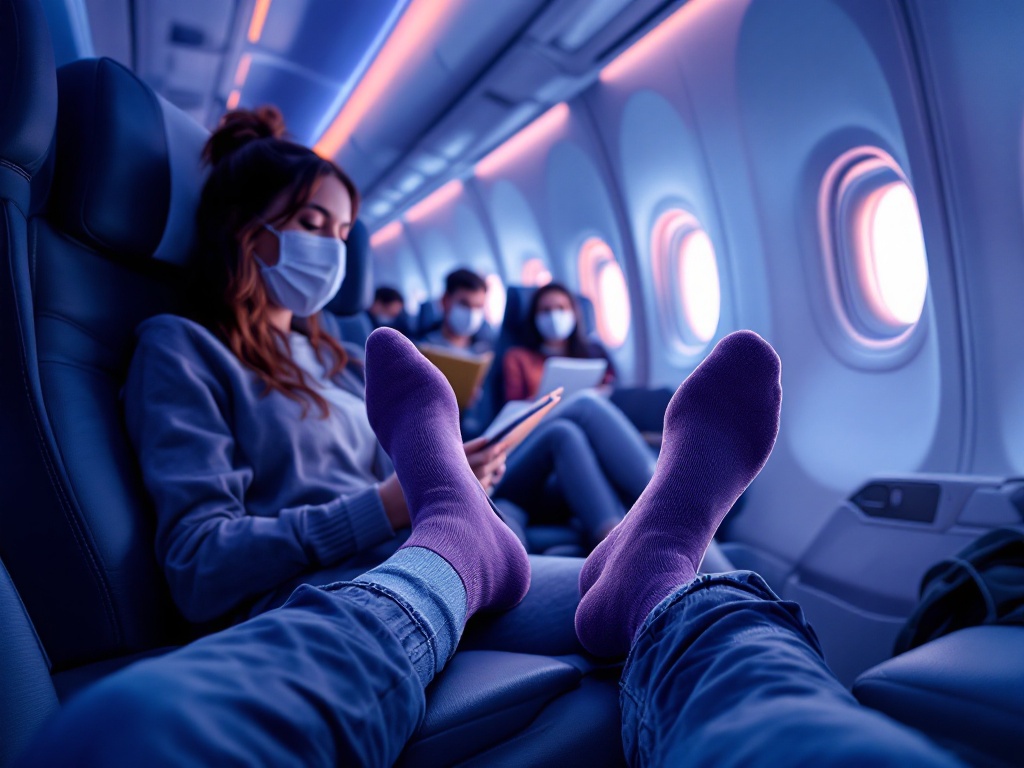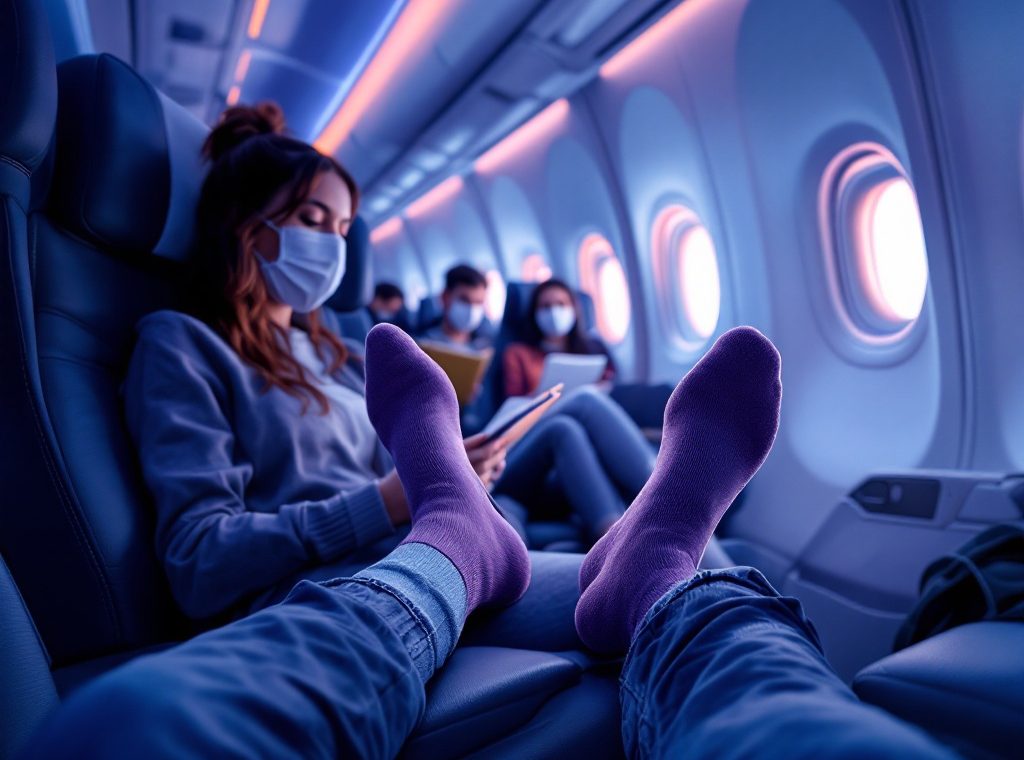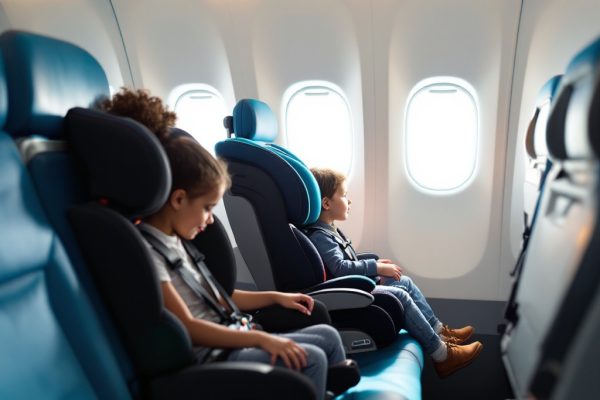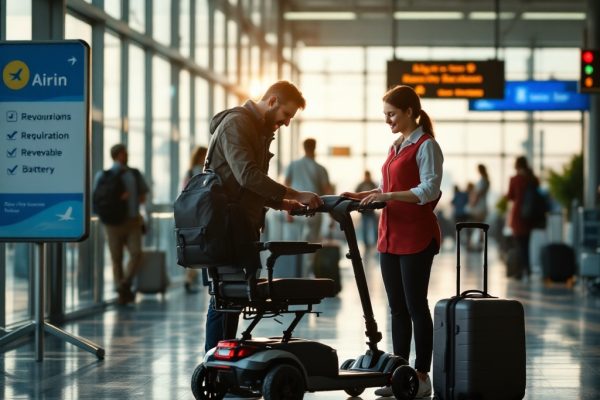Best Compression Socks for Air Travel: Make Your Trip Convenient
Dreading long flights and worried about leg discomfort or even DVT? Discover the travel hack trusted by frequent flyers: compression socks. These specialized socks apply gentle, graduated pressure to improve circulation and prevent swelling during air travel. Learn how compression socks can transform your next long-haul flight into a healthier, more comfortable experience, and find the perfect pair for your needs. Read on to discover the benefits and choose the right compression level for you.
Important information

- Compression socks improve circulation during flights, reducing swelling and discomfort from prolonged sitting.
- They help prevent deep vein thrombosis (DVT), a risk associated with long flights.
- A compression level of 15-20 mmHg is generally recommended for air travel.
- Choose breathable, moisture-wicking socks in knee-high or thigh-high lengths for optimal comfort.
- In-flight exercises like ankle rotations and foot pumps can further enhance circulation and comfort.
Understanding the Need for Compression Socks During Air Travel
Compression socks are essential for comfortable air travel. They apply graduated pressure, firmest at the ankles and gradually decreasing up the leg, which improves circulation during long flights. This helps prevent swelling and discomfort from prolonged sitting and reduces the risk of deep vein thrombosis (DVT). For a healthier and more pleasant journey, consider wearing compression socks to significantly enhance your in-flight experience.
What Are the Benefits of Compression Socks for Flying?
Compression socks offer significant benefits for leg health by improving circulation in the legs and feet. They apply graduated pressure, strongest at the ankles and gradually decreasing up the leg. This pressure gradient helps prevent swelling and discomfort, especially during long flights where blood flow can be restricted. Compression socks can also reduce the risk of deep vein thrombosis (DVT). They can also alleviate varicose vein symptoms, such as aching and throbbing.
Why Are Compression Socks Essential for Long-Haul Flights?
On long flights, leg swelling can occur due to prolonged sitting, which restricts blood flow. Compression socks provide a simple solution by gently compressing your legs and promoting circulation. This helps prevent deep vein thrombosis (DVT). For your next long journey, consider this easy health precaution.
How Do Compression Socks Promote Blood Circulation?
Compression socks apply graduated pressure, strongest at the ankles and gradually decreasing up the leg. This pressure profile supports veins and improves blood flow, preventing pooling in the lower legs and thus reducing swelling and discomfort.
Choosing the Best Compression Socks for Air Travel
Selecting the right compression socks for your flight can significantly improve your travel experience. Several key factors contribute to both comfort and effectiveness. These factors include compression level, material, length, and fit.A compression level of 15-20 mmHg is typically recommended for air travel. This promotes healthy circulation throughout your flight. Graduated compression, where the socks are tighter at the ankle and gradually loosen up the leg, is ideal. This design encourages blood flow back to the heart, reducing swelling and discomfort.The sock’s material also plays a crucial role. Breathable, moisture-wicking fabrics are essential for keeping your feet dry and comfortable, especially during long journeys. Consider sock length as well. Knee-high or thigh-high options are available depending on your preference. Ensure a snug but not constricting fit to avoid discomfort. Features like cushioning and seamless toes can further enhance comfort by providing extra support and preventing irritation.
Choosing the Right Compression Socks for Travel
Compression Level: A 15-20 mmHg compression level is generally recommended for air travel. This level provides sufficient pressure to improve circulation without being too restrictive.
Material: Opt for breathable and moisture-wicking fabrics like merino wool or nylon blends. These materials will help keep your feet dry and comfortable, even on long flights.
Additional Comfort Features
Length: Knee-high and thigh-high compression socks are common choices for travel. The length you choose depends on your personal preference and the level of support you need.
Fit: Ensure a snug fit that is not too tight. The socks should feel supportive but not constricting. Look for features like cushioning and seamless toes for added comfort.
What Factors Should Be Considered When Selecting Compression Socks?
Choosing the right compression socks depends on several factors. Size, material, and length are key considerations. You should choose knee-high or thigh-high socks depending on your individual needs. Compression level, measured in mmHg, is crucial, especially for those who fly frequently. Your choice should also be influenced by any existing health conditions, like varicose veins. For optimal comfort, prioritize breathable, moisture-wicking fabrics, seamless toes, and cushioned soles to promote healthy and comfortable feet.
How to Determine the Right Compression Level: mmHg Explained
Compression socks offer varying levels of support, measured in mmHg (millimeters of mercury). The ideal strength depends on individual needs and comfort. For preventative care during long travels, mild compression (8-15 mmHg) often suffices. Moderate compression (15-20 mmHg) may be more suitable for managing varicose veins or other circulatory issues. More serious conditions often necessitate stronger compression (20-30 mmHg or higher), typically requiring a doctor’s prescription. Consulting a healthcare professional will ensure you find the appropriate compression level.
What Are the Advantages of Graduated Compression Socks?
Graduated compression socks apply the strongest pressure at the ankles, gradually decreasing as they extend up the leg. This design effectively enhances blood circulation, facilitating its return from the lower extremities to the heart. Consequently, swelling and leg fatigue are reduced. Improved blood flow helps prevent deep vein thrombosis (DVT), a risk particularly associated with extended air travel. Beyond DVT prevention, these socks can also alleviate leg cramps and overall discomfort, contributing to a more comfortable travel experience.
- enhanced blood circulation, reducing swelling and leg fatigue,
- prevention of deep vein thrombosis (DVT), particularly during long flights,
- alleviation of leg cramps and overall discomfort for a more comfortable travel experience.
Maintaining Comfort and Health During Flights
For a comfortable flight, ensure your compression socks fit snugly but don’t constrict your legs. Put them on before boarding and smooth out any wrinkles to avoid uneven pressure and promote healthy circulation.
In-flight exercises like ankle rotations, foot pumps, and knee lifts are simple yet effective ways to boost blood flow and prevent stiffness on long journeys. These can be done discreetly right in your seat, so keep those legs moving!
How to Wear Compression Socks Properly
Flip your socks inside out, up to the heel.
Insert your foot and adjust the heel.
Smoothly roll the sock up your leg, ensuring a wrinkle-free fit.
The top band should lie flat just below your knee.
Tips for In-Seat Exercises to Enhance Circulation
Ankle circles: rotate your ankles clockwise and counter-clockwise to improve circulation.
Foot pumps: flex your calf muscles by pumping your feet up and down.
Leg lifts: lift your legs periodically to further boost blood flow and reduce swelling.
Performing these movements regularly during your journey can significantly enhance comfort and keep your legs feeling fresh.










